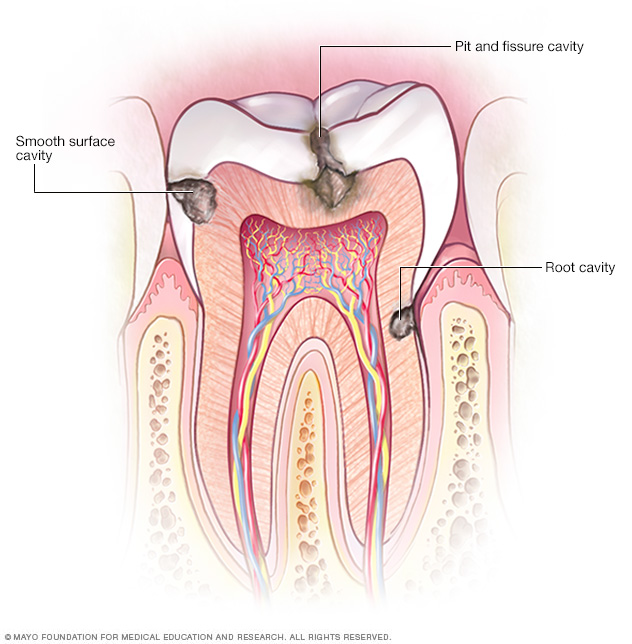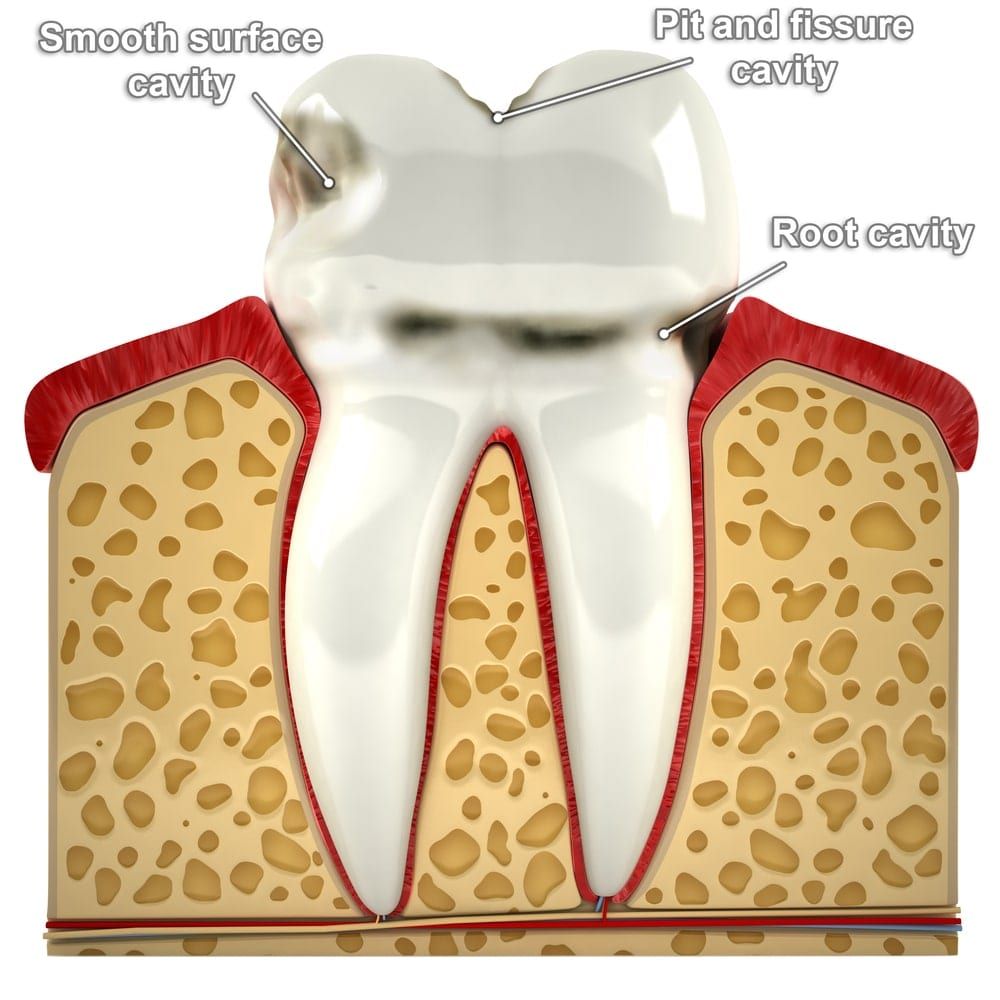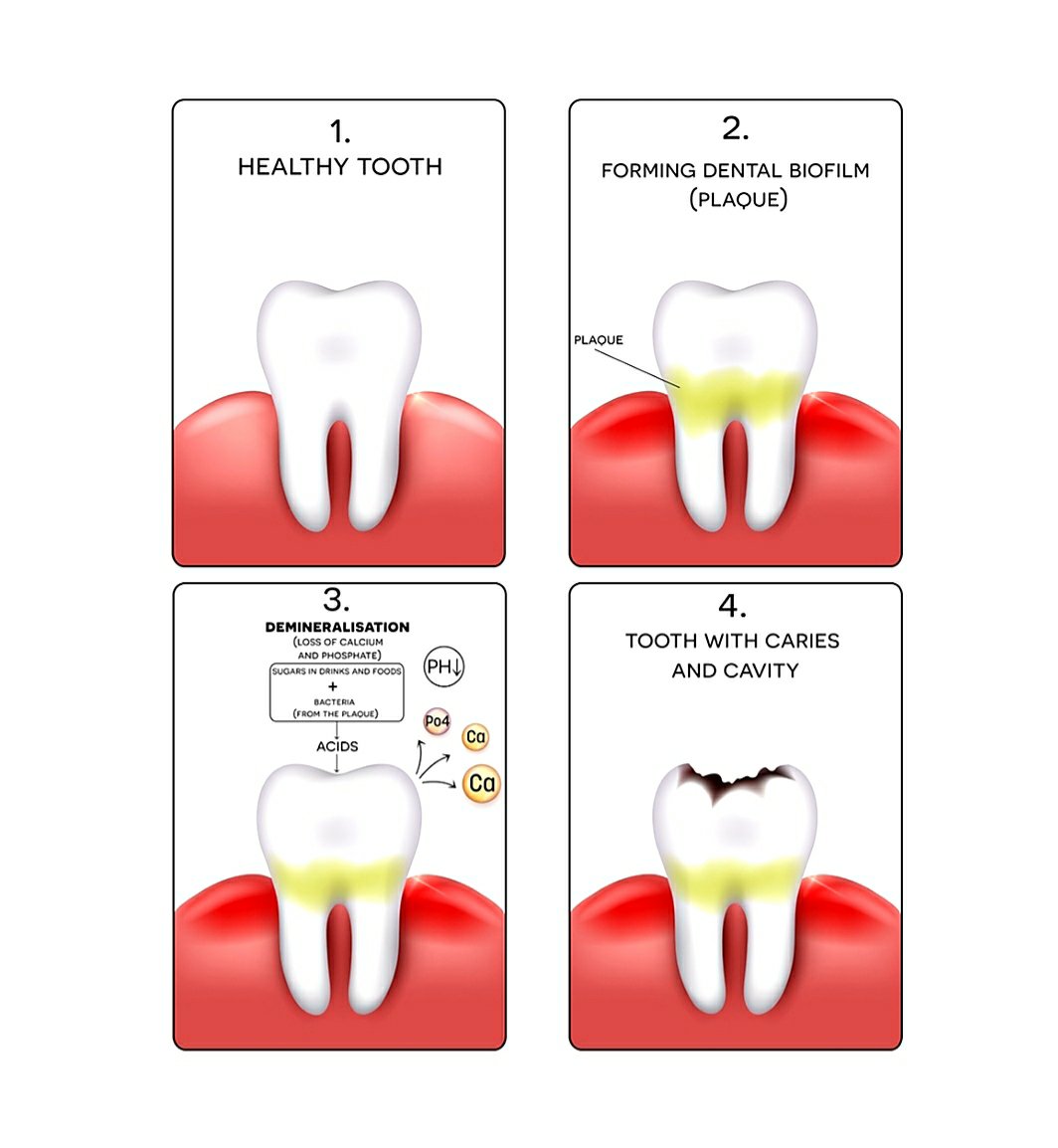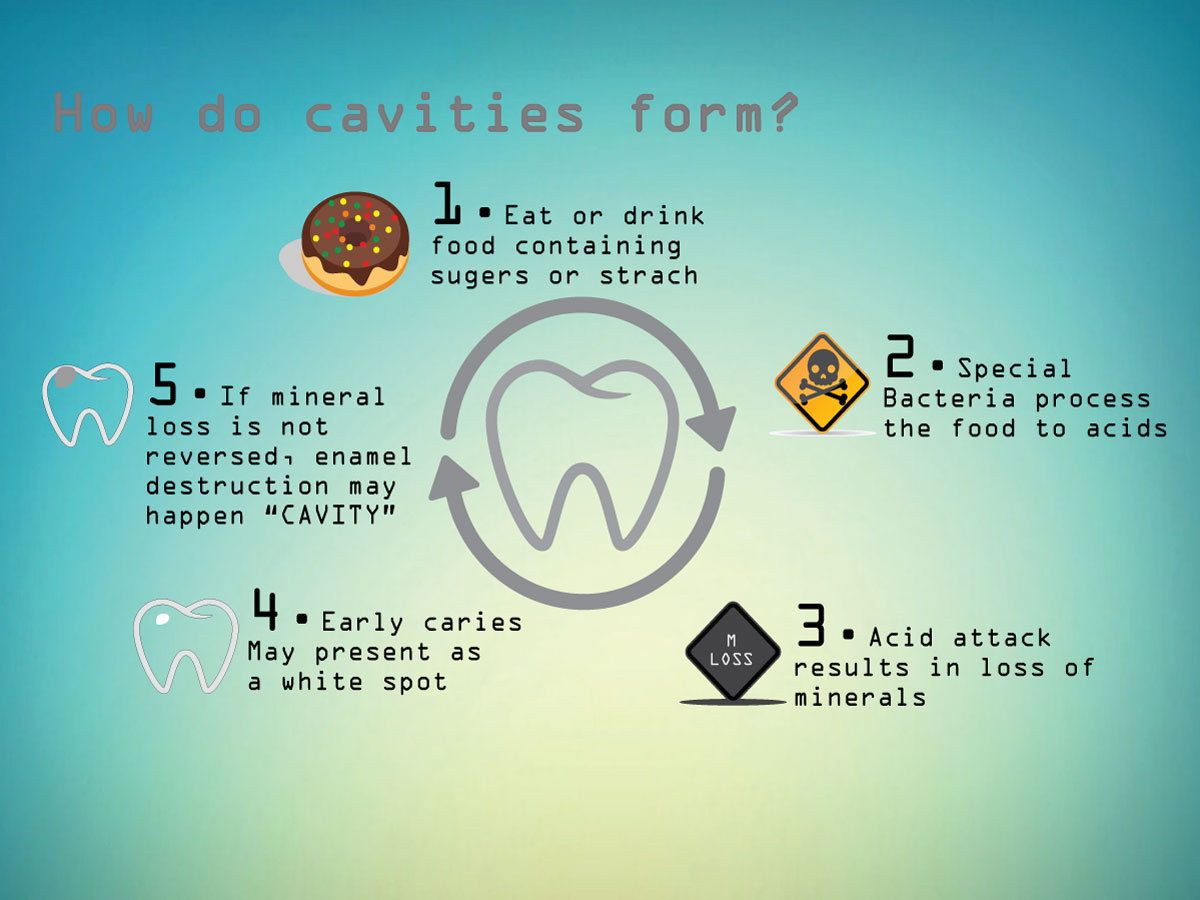Where Do Cavities Form
Where Do Cavities Form - When a cavity reaches the pulp, the tooth begins to decay faster, leading to inflammation,. When you eat or drink foods containing sugars, the bacteria in plaque produce acids that attack tooth enamel. Web as enamel is weakened, small holes in your teeth called cavities, or dental caries, can form. Web those are cavities that form on the smooth sides of your teeth, often in between your teeth. Web cavities generally form on your teeth in places where bacteria can easily settle in, such as: Cavities (also called tooth decay or caries) are permanently damaged areas on the surface of your teeth that eventually turn into holes. It can lead to tooth sensitivity and pain. Around dental fillings or bridgework; Web cavities, also known as dental caries, are areas of decay in the tooth. A person’s mouth will normally rest at a ph 7, and the environment needs to dip below that number to become acidic, allowing plaque to affect the teeth.
This will usually only happen in spurts and is the reason why cavities take. Cavities, also called tooth decay, are one of the greatest unmet health treatment needs. It can lead to tooth sensitivity and pain. They're pretty common and can be treated quickly. Web also referred to as tooth decay, a cavity is a permanently damaged area in a tooth. For example, enamel, dentin, and cementum. A person’s mouth will normally rest at a ph 7, and the environment needs to dip below that number to become acidic, allowing plaque to affect the teeth. Web 0:00 / 2:30 this video describes how to reverse the tooth decay process and avoid cavities and mentions nidcr's related research. Cavities form when acids in your mouth wear down (erode) your tooth’s hard outer layer ( enamel ). First, it’s important to note that cavities form in places where it’s challenging to remove plaque.
This will usually only happen in spurts and is the reason why cavities take. The acids in plaque dissolve the enamel, creating holes called cavities. Web 0:00 / 2:30 this video describes how to reverse the tooth decay process and avoid cavities and mentions nidcr's related research. Anyone can get a cavity. Web cavities, also known as dental caries, are areas of decay in the tooth. Web cavities, or tooth decay, occur when acid produced in the mouth attacks the tooth causing holes or cavitations. Cracks, pits or grooves in the back teeth; Web the bacteria, acid, food debris, and your saliva combine to form plaque, which clings to your teeth. Web also referred to as tooth decay, a cavity is a permanently damaged area in a tooth. It can lead to tooth sensitivity and pain.
What Happens If You Leave a Cavity Untreated? DH Dental Clinic Lahore
They're pretty common and can be treated quickly. Web cavities are essentially holes or damaged areas in the hard tissue of the teeth. Bacteria are simply very small organisms that can be good or bad. Cracks, pits or grooves in the back teeth; Around dental fillings or bridgework;
How Do Cavities Form? ChildSmiles•FamilySmiles
Bacteria is always present in the mouth, and when proper oral hygiene is not maintained, bacterial flora will assemble into a thin, sticky substance known as plaque or biofilm. Web the bacteria, acid, food debris, and your saliva combine to form plaque, which clings to your teeth. They're pretty common and can be treated quickly. Although you might not notice.
How To Know You Got A Cavity / The Magic Liquid That Makes Cavities Go
This will usually only happen in spurts and is the reason why cavities take. Web as enamel is weakened, small holes in your teeth called cavities, or dental caries, can form. You probably know that a dental cavity is a hole in a tooth. Cavities form when acids in your mouth wear down (erode) your tooth’s hard outer layer (.
Cavities/tooth decay Symptoms and causes Mayo Clinic
Web cavities, also called tooth decay or caries, are caused by a combination of factors, including bacteria in your mouth, frequent snacking, sipping sugary drinks and not cleaning your teeth well. It can be a problem for children, teens and adults. Cavities, also called tooth decay, are one of the greatest unmet health treatment needs. Web pulp decay beneath the.
Top Kid's Dentist Palos Heights Blog How do cavities form?
However, sugar is only one culprit that can affect your teeth. Web pulp decay beneath the dentin lies the pulp of the tooth, which contains nerves and blood vessels. Cavities form when acids in your mouth wear down (erode) your tooth’s hard outer layer ( enamel ). Web those are cavities that form on the smooth sides of your teeth,.
Cavities The Ultimate Guide Quarterpath Dental
Web where do cavities form? Web cavities form when a person experiences frequent plaque exposure (such as snacking throughout the day), poor plaque removal methods, or has a diet that’s high in certain things like processed carbohydrates. A cavity that forms just below the gumline is a root cavity. Web those are cavities that form on the smooth sides of.
DO YOU KNOW HOW CAVITY FORM? EMERALD DENTAL
But did you know that a cavity is the result of the tooth decay process that happens over time? Untreated cavities can lead to abscess (a severe infection) under the gums which can spread to other parts of the body and. Web cavities, also called tooth decay or caries, are caused by a combination of factors, including bacteria in your.
How do cavities form? Bronte Road Family Dental
Cavities and tooth decay are among the world's most common health problems. A person’s mouth will normally rest at a ph 7, and the environment needs to dip below that number to become acidic, allowing plaque to affect the teeth. Web a cavity is a small hole in your tooth that occurs when the hard outer layer of the tooth,.
Do Cavities Cause Bad Breath SmartMouth
Web how do cavities form? Web austin tx tmj/tmd treatment restorative dentistry how do cavities form? A person’s mouth will normally rest at a ph 7, and the environment needs to dip below that number to become acidic, allowing plaque to affect the teeth. However, there are three main types of cavities: Cavities, also called tooth decay, are one of.
Kid's Dentist Palos Heights Blog How Do Cavities Form?
However, sugar is only one culprit that can affect your teeth. Web those are cavities that form on the smooth sides of your teeth, often in between your teeth. Web cavities, also known as dental caries, are areas of decay in the tooth. Cavities do not form overnight, in fact, it can take months or even years for them to.
In More Serious Cases, A Cavity Can Result In A Dental Procedure Called A Root Canal.
Tooth decay can largely be affected by one’s lifestyle, diet, and oral hygiene. It can be a problem for children, teens and adults. Cavities and tooth decay are among the world's most common health problems. Another name for tooth cavities is dental caries.
So How Do These Damaged Spots Form On Our Teeth?
When you eat or drink foods containing sugars, the bacteria in plaque produce acids that attack tooth enamel. This type of cavity is found on the chewing surfaces of the molars and premolars. Web cavities generally form on your teeth in places where bacteria can easily settle in, such as: Too much bacteria can cause sickness and infections.
A Root Cavity Can’t Be Addressed.
All people have bacteria living in their bodies. The acids in plaque dissolve the enamel, creating holes called cavities. Web how do cavities form? Many people get cavities, and the cavities can range in shape and size.
Cavities Do Not Form Overnight, In Fact, It Can Take Months Or Even Years For Them To Occur.
Web a cavity is a small hole in your tooth that occurs when the hard outer layer of the tooth, called enamel, is damaged. They're pretty common and can be treated quickly. A person’s mouth will normally rest at a ph 7, and the environment needs to dip below that number to become acidic, allowing plaque to affect the teeth. Web as enamel is weakened, small holes in your teeth called cavities, or dental caries, can form.









